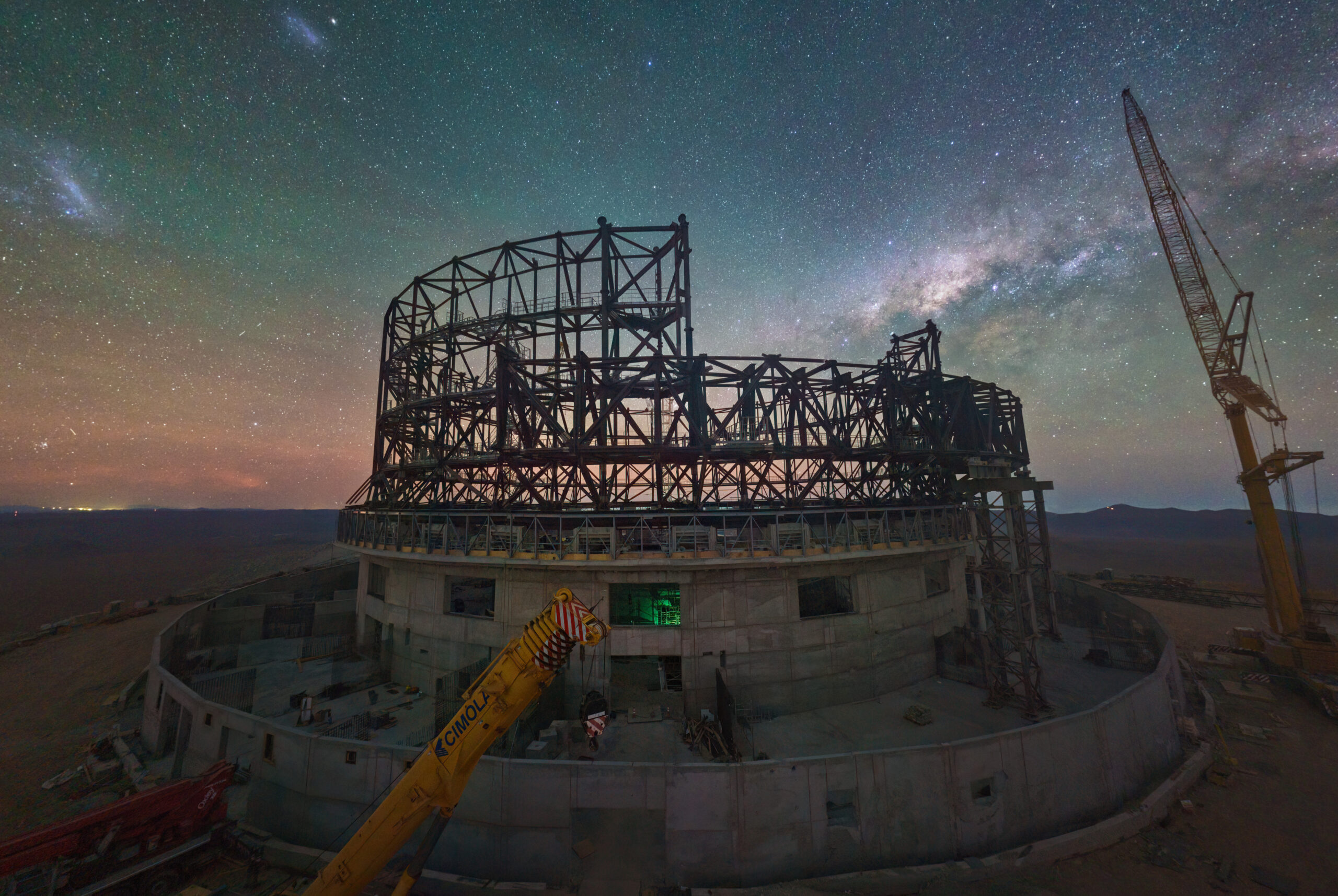Construction of the European Southern Observatory’s (ESO) Extremely Large Telescope (ELT) has reached a significant milestone, with more than 50% of the project now complete. The ELT, set to become the largest ground-based telescope in the world for visible and infrared light, boasts a groundbreaking five-mirror optical design and a massive 39-meter main mirror, granting astronomers an unparalleled view of the cosmos.
Situated atop Chile’s Cerro Armazones, the ELT is taking shape rapidly as engineers and construction workers assemble the telescope dome with remarkable speed. The dome’s steel structure is transforming daily, gradually adopting the familiar round shape that characterizes telescope domes worldwide.
Manufacturing progress in Europe is also moving at an impressive pace, with the construction of the telescope mirrors and other components well underway. The main mirror (M1), composed of 798 hexagonal segments, is nearing completion, with more than 70% of the segments and their supports already manufactured. Meanwhile, M2 and M3 are currently in the polishing stage. The project’s most striking achievement lies in the development of M4, an adaptive mirror capable of adjusting its shape to compensate for air turbulence. All six of its thin petals have been fully finalized and integrated into their structural unit. Additionally, the ELT’s adaptive optics system has received all six laser sources for testing.
Alongside these milestones, progress is evident in the development and production of the ELT’s control system, equipment for assembly and commissioning, and the necessary support infrastructure. Four scientific instruments are entering the final design phase, with manufacturing preparations underway. The support infrastructure near Cerro Armazones, including a fully erected technical building for mirror storage and coating, is nearly complete. Notably, a photovoltaic plant supplying renewable energy to the ELT site has been operational since the previous year.
Although the ELT’s construction began nine years ago, completion of the remaining 50% of the project is expected to proceed at an accelerated pace. The initial phase involved extensive design finalization, prototyping, testing, and delays caused by the COVID-19 pandemic. With production processes now back on track, the remaining half is projected to be finished within five years. Nonetheless, constructing a telescope of this scale and complexity presents ongoing challenges until it is fully operational.
The ELT’s progress marks a major step forward in our quest to unlock the mysteries of the universe. As the largest and most advanced telescope ever built, the ELT promises groundbreaking discoveries and invaluable insights into the cosmos. What are your expectations for this monumental endeavor? We encourage you to share your thoughts below and join the conversation on the future of astronomical exploration.
Photo: E.S.O.


















+ There are no comments
Add yours